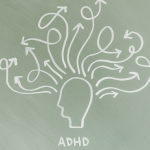Nutrition in Athletes: Dietary considerations of overreaching and overtraining
As naturopathic physicians, I think we can agree that the general state of the American diet is pretty dismal. The majority of people we see, whether or not they are athletes, could benefit from the same basic nutritional advice … avoid refined fats and sugars; eat more fiber, whole grains, fruits and vegetables; and watch portion size. It’s not rocket science. Athletes do, however, have some additional needs that add a little twist. One of the main considerations when evaluating athletes and their nutritional needs is the degree to which they are adapting to their training load. The “no pain, no gain” philosophy is still present in the minds of many athletes and coaches. A general lack of knowledge as to the signs of poor adaptation to training regimens coupled with virtually no understanding of the role of nutrition often leads to overtrained and burnt-out athletes.
Overtraining Etiology
A well-balanced training program will have periods of training-induced stress with periods of recovery, during which an athlete repairs and rebuilds. Overreaching occurs when an athlete’s training and non-training stress reaches a point where there is a short-term decrease in performance that can last from several days to several weeks. Overtraining occurs when the accumulation of stressors results in a longer period of decreased performance, from several weeks to several months.
The body strives to maintain homeostasis in periods of heavy training or overreaching. The key to maintaining balance during these periods of heavy work is satisfying the body’s energy and macro- and micro-nutrient requirements. Muscle damage, dietary intake and overtraining interrelate. Commonly, overtrained athletes’ appetites fall off, resulting in consumption of a less than optimal intake of carbohydrates and other nutrients. The resulting deficiencies lead to reduction in glycogen, amino acid and essential fatty acid levels, thereby affecting performance, mood and bodily functions.
Nutritional guidelines for athletes have been gathered and agreed upon from a number of studies throughout the years. Recommended carbohydrate consumption is 7-10g of CHO per kilogram of body weight. Protein requirements are dependent on quality and quantity of the protein and energy intake of the athlete. Athletes who are not consuming adequate calories to meet their energy requirements will use protein to generate glucose instead of to generate muscle tissue. The suggested range of protein intake for athletes is 0.8-2.0g/kg/day, which equates to 60-150g per day in a 170-pound male. Athletes who are consuming enough kilocalories and have a reasonably balanced diet should not have to consume extra protein. The exception would be for athletes who are restricting calories or those making poor food choices.
The Roles of Glutamine, Macronutrients and Omega Oils
Of particular interest is the amino acid glutamine. Glutamine is used as a nitrogen source for nucleotide synthesis in lymphocytes. It has been hypothesized that when athletes are not meeting their energy requirements through sufficient carbohydrate consumption, there is not enough protein spared for support of immune function and muscle synthesis.
Another area that has not been explored but I have observed clinically is the need for protein and glutamine to support the gastrointestinal tract of athletes. Long-distance runners experience small amounts of gastric bleeding, which suggests that the gut barrier function is being compromised. In fact, a common complaint of many triathletes and runners is GI irritation, commonly referred to as “runner’s trots.” The combination of glutamine depletion, resulting in both degradation of gut mucosa and alteration in lymphocyte population and function, along with altered levels of IgA, mediated by elevated cortisol levels, sets up the “perfect storm” for food sensitivities. To add further insult to injury, consider that overtrained athletes are more susceptible to URIs, and are commonly treated with antibiotics, further altering GI flora.
The general theme of much literature regarding macronutrients in sports focuses almost exclusively on caloric content. Fats get the same treatment, for the most part. As naturopathic physicians, we are well aware of the role of EFAs in the inflammatory cascade. The majority of athletes will be familiar with the caloric aspects of fat and will, for the most part, be more focused on carbohydrates and protein. They will have no idea about the anti-inflammatory effects of EFAs, though. That said, it has come to my attention that Norwegian skiers make large use of fish oils. As they are the current skiing powerhouse, everyone is imitating them. They load up with 10-18g of fish oils per day.
For the most part, literature in the area of fat intake in athletes has focused almost exclusively on the caloric content of fat and its potential to spare glycogen in endurance athletes. Increasing plasma free fatty acids inhibits carbohydrate utilization. During sustained activity, the result is a reduction of carbohydrate utilization and a delay in the onset of exhaustion. I have yet to discover whether the Norwegians are using fish oils for the specific anti-inflammatory benefits or the glycogen-sparing aspects.
In keeping with the discussion of the overtrained and overreached athlete, certainly there is an important role for omega-3 oils. Don’t forget the plant-derived omega-6 oils, as well. Some doctors will express concern that linoleic acid will convert into arachidonic acid via the activity of delta-5-desaturase on dihomogamma-linolenic acid (DGLA) and thereby lead to pro-inflammatory Series 2 prostaglandins. However, the balance of omega-6 with omega-3 is important, as the Series 1 prostaglandins generated from DGLA (the preferred pathway) has an important role to play in the production of mucin in the GI tract and, consequently, intestinal barrier function. When there is a deficiency of omega-3 fatty acids in the diet, the delta-5-desaturase enzyme, rather than being used to convert EPA into Series 3 (anti-inflammatory prostaglandins), will begin to convert more DGLA into arachidonic acid and the inflammatory Series 2 prostaglandins. In short, balancing EFAs accomplishes two things – inflammation control and GI support.
Female Athlete Triad Symptoms
The population of athletes that most clearly demonstrates the role of nutrition in overtraining is amennorrheic female athletes. Female athletes who present with the female athlete triad symptoms of osteoporosis, amenorrhea and disordered eating can be viewed as models of overtraining. Most women with this triad have training regimens with excessive workloads and an emphasis on restricting calories to maintain leanness. These athletes may have no eating disorders or adverse feelings to food, but may have difficulty maintaining weight, feel tired and experience chronic fatigue. They will often have higher incidence of illness and injury, and high levels of circulating cortisol, all of which are classic signs and symptoms of overtraining. In these cases, a combination of a more balanced training program and appropriate supplementation – of calories, protein and fats – will often result in increased performance and resumption of a more normal menstrual hormone profile.
To date, no definitive studies have investigated the role of nutrition in overtraining or overreaching. It appears that caloric intake and nutrient density of food consumed during periods of overtraining may play a role in athletic performance and the ensuing health of the athlete. The basic goal of any nutritional strategy for athletes involved in heavy training regimens is to ensure that there is adequate consumption of carbohydrates to prevent the catabolism of amino acids from muscle. Many athletes will experience decreased appetite immediately after a prolonged workout and will wait to eat. If overtrained or overreached, this can lead to a downward spiral of poor nutrition that will lead to decreased performance for days, weeks or even months. The allopathic approach to sports nutrition focuses almost exclusively on caloric content and meeting caloric demands. As naturopathic physicians, we can offer much more to athletes. The integration of concepts such as GI barrier function, adrenal function, the role of the different essential fatty acids and the eicosanoids derived from different fat sources allows us to offer solutions to significant health issues that have the potential to affect athletes’ health for the rest of their lives.
Chris Spooner, ND received a bachelor’s degree in cellular biology from the University of Victoria and his ND from CCNM in 1998. Since then, he has been practicing naturopathic medicine in various locations, including with Dr. Peter Bennett at the Helios Clinic in Victoria. He also has entertained various teaching positions, including as post-doctoral fellow in environmental medicine at the SCNM Environmental Medicine Center of Excellence under Dr. Walter Crinnion; as assistant professor at SCNM; and as adjunct faculty at both CCNM and the University of Bridgeport. Dr. Spooner competed in the 1991 Pan American Games in rowing and has combined his experience in athletics with his naturopathic training to incorporate naturopathic therapies in the training programs of elite athletes, including working with PacificSport, the Canadian west coast national training center, to implement non-drug strategies to assist athletes in recovering from injuries and training. Currently, Dr. Spooner is in private practice in Vernon, B.C., Canada.








